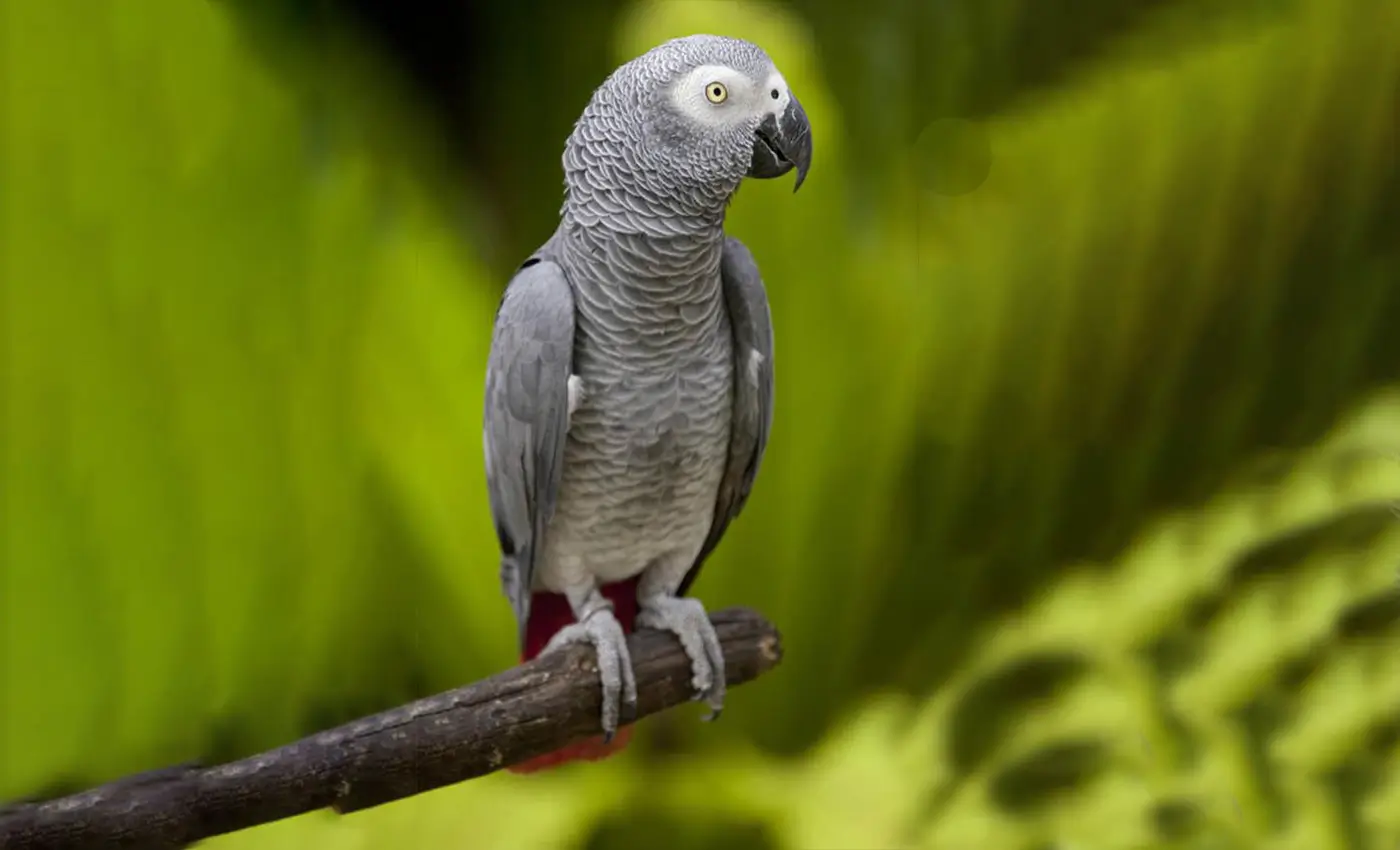Physical Characteristics
Size and Appearance
The Jaco parrot is a medium-sized bird, with a body length of approximately 35 cm (14 inches) and a weight of around 500 grams (1.1 pounds). These parrots exhibit a striking color palette:
- Dark Grey: The most common coloration, featuring dark grey feathers throughout the body.
- Dark Grey with Red Plumage: Some Jaco parrots display dark grey feathers with a splash of red plumage on the back.
- Light Grey with Red Tail Feathers: Another variation includes light grey feathers complemented by vibrant red feathers on the tail.
Lifespan
Jaco parrots are known for their longevity, often living up to 50 years or more in captivity. This long lifespan requires a significant commitment from their owners, ensuring they receive consistent care and attention throughout their lives.
Behavior and Social Traits
Intelligence and Mimicry
The Jaco parrot is widely regarded as one of the most intelligent avian species. These parrots have the astounding ability to learn and mimic over 1,500 words, making them exceptional communicators. They can also imitate various sounds and even replicate the behavior of their human companions, showcasing their keen observational skills.
Social Nature
Jaco parrots are incredibly social birds that form strong bonds with their human families. They thrive on interaction and mental stimulation, requiring regular engagement to prevent boredom and behavioral issues. Their friendly and affectionate nature makes them endearing pets, but it also means they need plenty of attention and enrichment.
Habitat and Distribution
Native Regions
Jaco parrots are native to the rainforests of West and Central Africa. They are commonly found in countries such as Ghana, Congo, and Cameroon. These birds inhabit dense forest areas, where they have access to a rich variety of fruits, nuts, seeds, and foliage.
Diet in the Wild
In their natural habitat, Jaco parrots feed on a diverse diet that includes fruits, nuts, seeds, and occasionally insects. Their strong beaks allow them to crack open hard shells and access nutrient-rich food sources. This varied diet is essential for maintaining their health and vibrant plumage.
Conservation Status
Threatened Species
The Jaco parrot faces significant threats due to habitat loss, illegal pet trade, and hunting. Among the three subspecies of Jaco parrots, the Princess Ghana subspecies is particularly endangered and is listed in Appendix I of CITES (the Convention on International Trade in Endangered Species of Wild Fauna and Flora), which provides the highest level of protection.
Vulnerable Species
Both the red-tailed and bourgeois-tailed Jaco parrots are listed in the Red Book as species close to a vulnerable position. Conservation efforts are very important to save such magnificent birds and ensure their survival in the wild.
FAQs
1. How can I provide a suitable environment for my Jaco parrot at home?
To create a comfortable environment for your Jaco parrot, ensure their cage is spacious, allowing them to spread their wings and move freely. Provide plenty of toys, perches, and enrichment activities to keep them mentally stimulated. Regular social interaction is good for their health and wellness.
2. What is the ideal diet for a Jaco parrot in captivity?
A balanced diet for a Jaco parrot should include high-quality parrot pellets, fresh fruits, and vegetables. Nuts and seeds can be given as treats but should not be the primary food source due to their high-fat content. Fresh water should always be available.
3. How can I train my Jaco parrot to talk?
Training a Jaco parrot to talk involves regular, consistent interaction. Start with simple words and phrases, repeating them clearly and often. Positive reinforcement, such as treats and praise, can encourage your parrot to mimic the sounds. Patience and consistency are key to successful training.
4. Are Jaco parrots good pets for first-time bird owners?
While Jaco parrots make wonderful companions due to their intelligence and affectionate nature, they require a significant amount of care, attention, and mental stimulation. Prospective owners should be prepared for a long-term commitment and ensure they can meet the bird’s needs before adopting.
5. What should I do if my Jaco parrot shows signs of stress or boredom?
Signs of stress or boredom in a Jaco parrot include feather plucking, aggression, and vocalization. To alleviate these issues, provide more mental stimulation through toys, puzzles, and interactive play. Ensure they have ample social interaction and consider consulting an avian veterinarian or a professional bird behaviorist for additional guidance.
Conclusion
The Jaco parrot, with its exceptional intelligence and endearing personality, is a remarkable avian companion. Their ability to mimic human speech and form strong bonds with their owners makes them a unique and cherished pet. However, their long lifespan and need for social interaction require a significant commitment. By understanding their needs and providing a suitable environment, you can ensure your Jaco parrot thrives and brings joy to your household for many years. Whether you are an experienced bird owner or considering your first avian pet, the Jaco parrot offers a fascinating and rewarding experience.

Post Comment